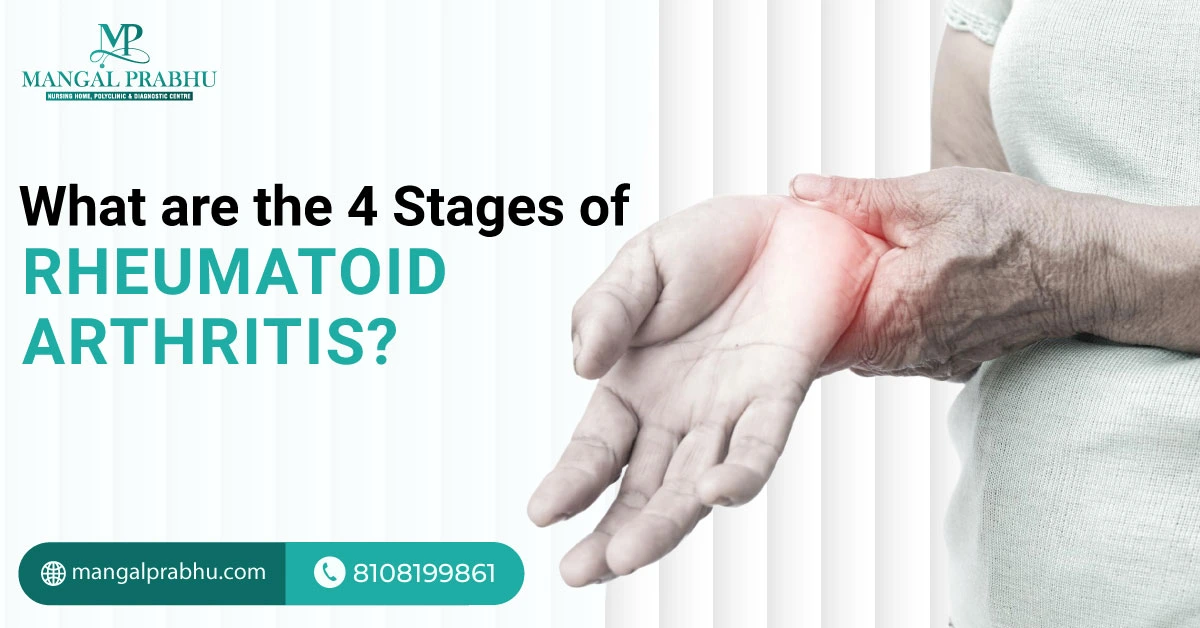
What are the 4 Stages of Rheumatoid Arthritis?
Rheumatoid arthritis is an autoimmune disorder in which your immune system mistakenly attacks your joints, causing inflammation, swelling, pain, and eventually joint damage. Patients with rheumatoid arthritis might experience varying symptoms, but the disease usually progresses in four stages. An orthopedic doctor in Navi Mumbai can recommend a treatment plan based on your stage of RA and how fast it’s progressing.
Early detection is key to slowing the progression of the disease, thus improving your chances of retaining your joint mobility.
Stage 1: Early RA
The initial symptoms of rheumatoid arthritis include joint pain and mild swelling in the feet and hands. The inflammation in the joints can cause swelling in the tissues, which may lead to pain. If it occurs in the hands, you might notice pain in the fingers and knuckles, which might improve with movement. Diagnosis of RA at an early stage is often challenging, as symptoms are often confused with a normal part of aging.
Symptoms
- Mild pain in smaller joints, like those of your hands and feet.
- Fatigue
- Swelling in the joints
Diagnosis
A blood test and imaging tests like X-rays and MRI can show joint damage.
Stage 2: Moderate RA
The second stage of RA damages bones and cartilage. When that happens, you might experience loss of mobility in the affected joint. For instance, it might become difficult for you to move or bend your fingers with second-stage rheumatoid arthritis.
Symptoms
- Increased joint pain
- Prolonged periods of reduced mobility
- Joint stiffness
- Increased swelling
Diagnosis
A blood test can detect RA markers, which can confirm the diagnosis.
Stage 3: Severe RA
The third stage of rheumatoid arthritis is often considered severe. As the cartilage and bone destruction speed up, extreme pain and significantly reduced mobility occur. Joint deformation makes the swelling more visible. Clear examples are twisted fingers with heavily swollen knuckles.
Symptoms
- Carpal tunnel syndrome
- Extreme pain in the joints
- Severe loss of mobility
- Visible joint deformity
Diagnosis
Diagnosis becomes clear at this stage. With symptoms indicating rheumatoid arthritis and your blood tests showing inflammatory markers, your doctor can diagnose RA.
Stage 4: End-stage RA
You might experience severe pain, joint deformity, swelling, and lost mobility at the end-stage RA. You will lose most of your joint function and might experience muscle weakness. This stage mainly affects your mobility. You may need mobility-assisted devices to move your affected joints freely. Due to the compromised mobility combined with pain and swelling, RA at the last stage can affect your quality of life.
How the Disease Progresses
RA progresses gradually. You might experience periods of relief with sudden worsening of the symptoms. Fortunately, most people do not reach the fourth stage. Still, the pain, deformity, and loss of joint function can interfere with your daily life. It’s advisable to seek rheumatoid arthritis treatment in Navi Mumbai as soon as possible. Early treatment can help slow the progression of the disease and offer significant relief from the pain and other symptoms.
